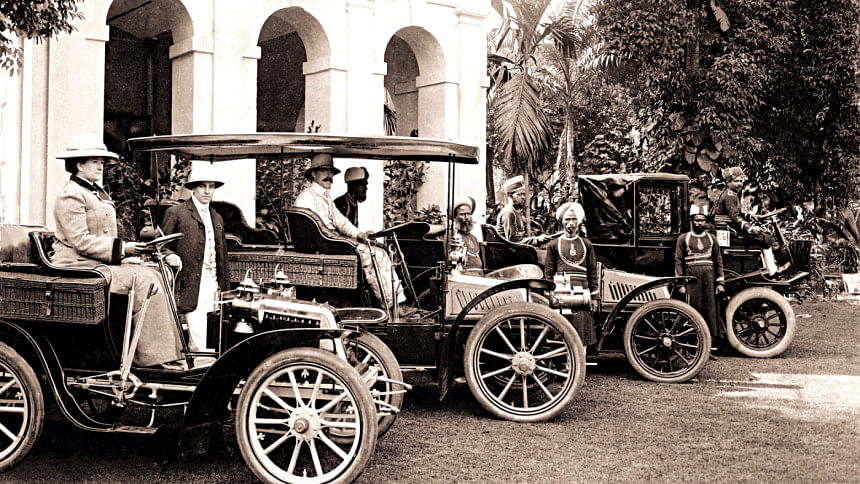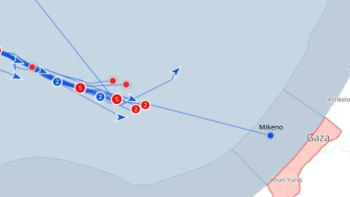The first motor car on the streets of Dhaka

Before we delve into the story of the first motor car in Dhaka, it's worth exploring an earlier question: When did four-wheelers first appear on the city's roads?
Back in 1790, the Collector of Dhaka noted that a group of soldiers stationed in the city had introduced a hired horse-drawn carriage service. It was likely established to transport goods from Begunbari in Tejgaon -- then an army quarters -- to the main city. However, this service did not last long.
Still, by the early 19th century, Dhaka did have at least one known horse-drawn carriage. During his visit in 1824, Bishop Heber of Calcutta noted that the Naib Nazim of Dhaka used an old landau carriage drawn by four horses of Shamsuddaula.
But for a more structured public transportation system, Dhaka had to wait a bit longer. The credit for this goes largely to an Armenian businessman named Shircore, who introduced thika gari (rental carriages) around 1856. His business, Harmony Carriage, quickly became profitable, inspiring other local businessmen to follow suit.
By 1867, about 60 rental carriages were operating in Dhaka; by 1878 this number had grown to 300, and a decade later, it had doubled.
As with horse-drawn carriages, the introduction of motor vehicles in Dhaka followed the lead of Kolkata. According to Radharaman Mitra's "Kolkata Darpan", the first passenger motor vehicle appeared on the streets of Kolkata in 1896, though some accounts suggest it was 1897. That vehicle, used during British rule, was made by the French company De Dion-Bouton. The De Dion model was first introduced in Kolkata by H H Reynolds, and the first Bengali to purchase a motor vehicle was C Basak.
Naturally, this leads to a key question: When did the first motor car appear in Dhaka?
Could it have been in 1904?
On February 18 of that year, the Viceroy Lord Curzon arrived in Dhaka with his wife, Lady Curzon. The Nawabs' garden house in Shahbagh was lavishly decorated for the occasion. To honour the visit, Nawab Khwaja Salimullah purchased several motor cars from Kolkata. In a historic photograph, Lady Curzon is seen with her hand on the steering wheel, Lord Curzon standing beside her, and four cars parked in front of the house.
However, a slightly different account is found in the autobiography of British car dealer Montague Grahame-White, "At the Wheel Ashore and Afloat: Reminiscences of Motoring, Yachting and Travel Over a Period of Forty Years".
According to him, the Nawab didn't buy the cars in haste for the Viceroy's visit. In fact, the decision came after a carefully considered plan.
In January 1903, Nawab Salimullah met Montague Grahame-White. Inspired by their meeting, the Nawab decided to purchase motor vehicles. By the end of that year, three cars ordered by him had arrived at Ahsan Manzil. According to "The Motor Magazine (1943)", these included a 10-horsepower and a 15-horsepower Mors, and an 8-horsepower Renault.
As mentioned earlier, in 1904, Nawab Khwaja Salimullah showcased his newly purchased automobiles at his Shahbagh garden house. This historic moment was captured by the renowned German photographer Fritz Kapp. These early automobiles thus became silent witnesses to Dhaka's evolving history. By 1915–16, the number of cars in Bengal had exceeded 1,000. Car manufacturers began organising roadshows, distributing flyers, and launching promotions to expand the market. Over time, the fascination with automobiles spread to other parts of the region.

 For all latest news, follow The Daily Star's Google News channel.
For all latest news, follow The Daily Star's Google News channel. 




Comments